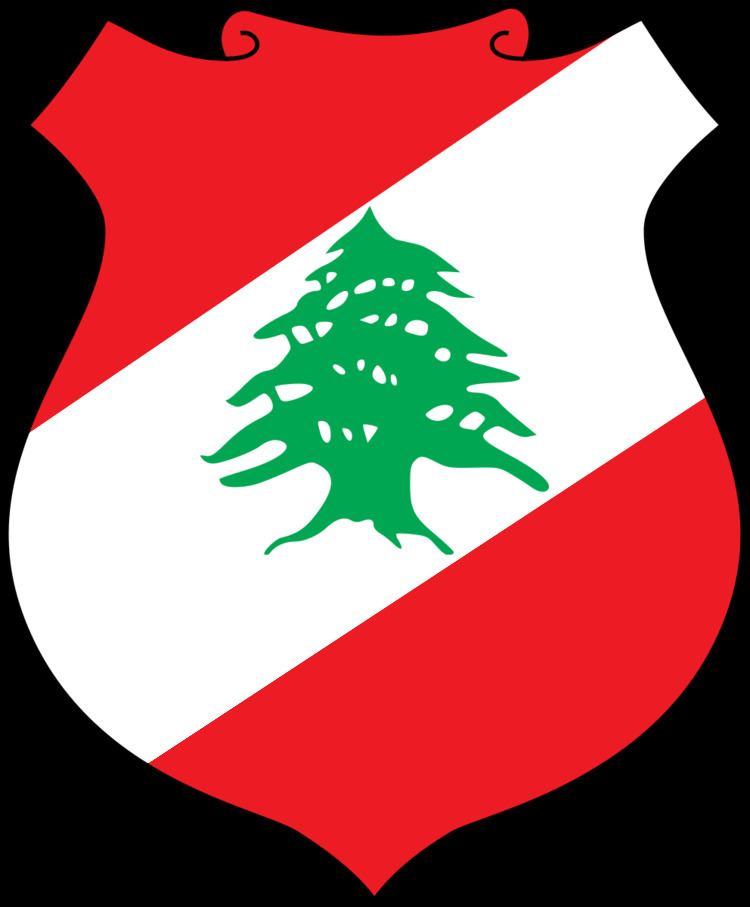 | ||
The Communist Action Organization in Lebanon (Arabic: منظمة العمل الشيوعي في لبنان, munaẓẓamah al-‘amal al-shuyū‘ī fī lubnān, French: Organisation de l'Action Communiste du Liban, abbreviation OACL) is a Marxist-Leninist political party and former militia group in Lebanon.
Contents
Membership
The OACL was one of Lebanon's few multi-sectarian parties, with Christian, Muslim and Druze members, but its main support base lay on the Shi'a Muslim community. OACL played a major role in the political radicalization of the Shi'a community during the 1970s. In the 1980s, it had a membership of about 2000.
Merger and foundation of OACL
The OACL was formed around 1970 through the merger of the Organization of Lebanese Socialists and Socialist Lebanon.
The Organization of Lebanese Socialists was led by Muhsin Ibrahim and Muhammed Kishli. It had its roots in the Lebanese branch of the Arab Nationalist Movement (ANM), a radical pan-Arab movement. During the 1960s Ibrahim was a leading figure in the leftist tendency with the ANM. This tendency, led by Naif Hawatmeh, argued that the ANM ought to adopt a Marxist outlook. This was opposed by the top ANM leader George Habash who, although being open to introducing Marxist concepts like anti-imperialism into the discourse of the ANM, wanted to retain the anti-communist character of the organization.
As the central leadership of ANM had shifted to Damascus, the Lebanese branch began to function more autonomously. The official ANM organ al-Hurriya ('Freedom'), of which Ibrahim had become editor in 1960, became a de facto mouthpiece for the Marxist sector. In 1968 the Lebanese branch of ANM broke its links to the mother organization, and renamed itself as the Organization of Lebanese Socialists.
Socialist Lebanon was a small group of Marxist intellectuals, Arab nationalists and former Ba'athists which had been formed in 1965. Leading members included people like Ahmed Beydoun, Waddah Sharara, Fawwaz Trabulsi and Ismat Kawwas.
Early history of the Organization
Ibrahim became the General Secretary of OACL. OACL was closely allied with the Popular Democratic Front for the Liberation of Palestine led by Naif Hawatmeh, which had a similar background to the left-wing sector of the ANM. Hawatmeh had broken away from the ANM in 1969, setting up the PDFLP (later renamed as the Democratic Front for the Liberation of Palestine). Al-Hurriya was published from Beirut as the joint organ of PDFLP/DFLP and OACL until 1977, when it became the DFLP organ.
OACL criticized the Lebanese Communist Party led by George Hawi for 'reformist tendencies', but held unsuccessful talks on a party merger in the mid-1970s. OACL had a profound impact in the radical student movement that emerged in Lebanon in the early 1970s.
In the spring of 1972 a large number of OACL members, who felt that neither group had committed sufficiently to "people's war", defected to Fatah.
In 1973 OACL took part in the formation of the Lebanese National Movement (LNM) together with the Progressive Socialist Party, the Lebanese Communist Party, Nasserists and others. Ibrahim became the General Secretary of the LNM.
In 1973-1974 OACL was active in the Ghandour food factory strike.
Civil War
When the Lebanese Civil War broke out OACL fought on the side of the LNM. In the early 1980s the OACL had been allied with the Syrians; in 1981, in support of Syria, Ibrahim had called for the resignation of then Lebanese Prime Minister Shafik Wazzan, who was felt to be to closely allied to then President Elias Sarkis.
1982 and onwards
However, the LNM dissolved after the Israeli invasion of Lebanon and the expulsion of the PLO from Beirut in 1982. After the defeat of 1982 Muhsin Ibrahim elaborated a critical review of the politics of the LNM during its decade-long existence, which were disseminated through the party weekly organ Beirut al-Massa in the end of that year. Ibrahim's criticism was based on three points: that LNM forces had committed communal violence (although less than their opponents), that it had become dependent on other Arab states (a candid reference to the role of Syria) and that the LNM had failed in its mobilization of various sectors of Lebanese society due to the inclusion of traditional political elements in the Movement.
The OACL then played a leading role in the early phases of resistance to the Israeli occupation. According to Hawi, the Lebanese Communist Party, the OACL and the Arab Socialist Action Party led by Hussein Hamdan had agreed to establish a specifically Lebanese resistance formation before the expulsion of the PLO. Hawi claims that the joint communique calling for resistance to the Israeli occupation of Beirut was written by himself and Ibrahim on 15 September 1982, while the initial resistance activities against the Israelis were undertaken jointly by the Communist Party and the OACL along with some smaller organizations, with Hawi and Ibrahim meeting daily in secret to coordinate activities.
During the 1980s the Syrian occupation of Lebanon grew stronger, and the OACL's alliance with Syria weakened; by 1987 the OACL was forced underground, since Muhsen Ibrahim refused to go along with the Syrian policy of opposition to PLO head Yasir Arafat.
During 1982-2000, the OACL supported the Shi'a Islamist Hezbollah movement in its campaign of guerrilla warfare against the Israeli occupation of South Lebanon.
